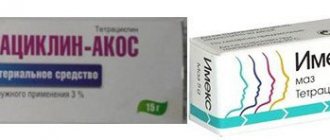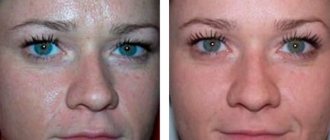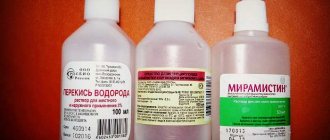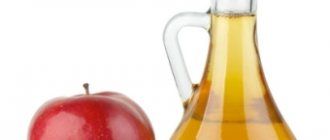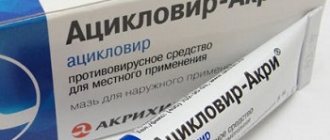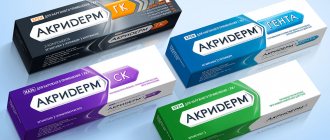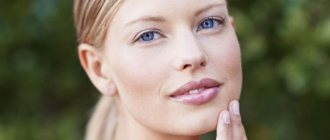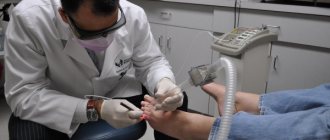- Amoxicillin for facial acne
- Application
- Warning
- The therapeutic effects of Amoxicillin on acne are as follows:
- General recommendations for patients with acne
- Reviews from a dermatologist about the drug
Acne is a common skin condition that, according to WrongDiagnosis, affects nearly 85 percent of people in the United States between the ages of 12 and 24, and is roughly the same today in CIS countries. It is an inflammatory disease that is characterized by the appearance of various lesions and blemishes on the skin .
How does the drug work?
Amoxicillin has antibacterial properties, thanks to which it destroys pathogenic microorganisms that are responsible for inflammatory processes. That is, the active components of the drug penetrate inside the cells and suppress pathogens by destroying their protein structure. However, in addition to the fact that pathogenic bacteria die, the effect of the drug also negatively affects the beneficial intestinal microflora. Therefore, if an antibiotic is taken orally, then together with it it is necessary to use an agent that will simultaneously restore beneficial microflora. An important point in acne treatment is that the effect is achieved only if pathogenic bacteria begin to grow and multiply in the ducts of the sebaceous glands and hair follicles. If the culprits of the rash are impaired functioning of the digestive, endocrine systems or metabolism, then treatment with Amoxicillin is useless. This is due to the fact that the antibiotic will not be able to cope with the main cause of the inflammatory process, so if the acne goes away, it will not be for long.
How to take Amoxicillin for acne?
Treatment to get rid of acne with Amoxicillin is a serious undertaking. That is why you should adhere to some rules:
- due to the high risk of side effects, especially if the dosage is incorrectly selected, it is necessary to consult a doctor before treatment;
- in order to specifically know who is the causative agent of the inflammatory process, you need to pass the necessary tests and undergo diagnostics;
- Due to the fact that the antibiotic can inhibit beneficial microflora, it is recommended to take prebiotics and probiotics together with it, which only a doctor can choose correctly.
There are also some features of the disease on which the use of the drug depends:
- If the disease occurs in a mild form, with the presence of single pimples, then it is enough to treat the surface of the skin in a targeted manner. In this case, there is no need to take medications orally.
- When the disease progresses in a moderate form with minor accumulations or in a severe form with severe lesions, the medication should be taken internally and at the same time the skin should be treated externally.
If the rash is severe, then the medicine should be taken twice during the day, morning and evening. For mild lesions - once a day, immediately after waking up. It is recommended to take the tablet with a large volume of water, approximately 1–2 glasses. Let's consider effective recipes for external use, with the addition of Amoxicillin:
- 1 tablet is crushed to a powdery state and diluted with a small amount of water to make a paste. Using a cotton swab, apply the product to the affected areas and leave for 5-10 minutes, after which it is washed off with warm water. The procedure is carried out 1-2 times during the week.
- Take 2 Amoxicillin tablets, crush them to a powdery state and mix with juice extracted from aloe. The medicine is applied in a targeted manner to the inflamed areas, left for 10 minutes and washed off with water. To get the desired effect, the mask should be done every other day for 2 weeks.
- Mix an Amoxicillin tablet with 10 grams of baby cream and 1 ampoule of retinol acetate, mix well and apply to the affected areas. After 10 minutes, the product is washed off with warm water and soap.
Tell me what antibiotics I can take for acne
85 replies
Latest - June 18, 2021 06:28 Go
Light
Doxycycline may help
Guest
LightDoxycycline may help
It will make your teeth yellow. Forever. And on the topic - I used ampicillin to get rid of subcutaneous acne forever.
Morgana
and will they help?? I no longer have the strength to endure such disgrace.
Di
I also drank Unidox and Solutab. Luckily, I got rid of acne. Today my dermatologist was shocked that I was completely without foundation and said that I could switch to light peeling for prophylaxis and that’s all. Now I only use Baziron. I must say it is a VERY good cream. Before that I tried zenerite. It didn’t help.
I got rid of acne like this: 1) took tests for infections -> cured ureaplasmosis 2) treated inflamed appendages 3) went to the lapar and had the cyst removed 4) checked the gastrointestinal tract. 5) I drink aevit, wobenzym and dienay. 6) ultrasonic cleaning and peeling every 3-4 weeks. 7) twice a day, morning and evening, baziron. The result must be said to be heaven and earth.
If you have any questions, write, I will be happy to answer.
Morgana
and will they help?? I no longer have the strength to endure such disgrace.
Di
I also drank Unidox and Solutab. Luckily, I got rid of acne. Today my dermatologist was shocked that I was completely without foundation and said that I could switch to light peeling for prophylaxis and that’s all. Now I only use Baziron. I must say it is a VERY good cream. Before that I tried zenerite. It didn’t help.
I got rid of acne like this: 1) took tests for infections -> cured ureaplasmosis 2) treated inflamed appendages 3) went to the lapar and had the cyst removed 4) checked the gastrointestinal tract. 5) I drink aevit, wobenzym and dienay. 6) ultrasonic cleaning and peeling every 3-4 weeks. 7) twice a day, morning and evening, baziron. The result must be said to be heaven and earth.
If you have any questions, write, I will be happy to answer.
Guest
Dear Girls! I am Julia by training as a Laboratory Technician, do not listen to advice, you will ruin your body, go to a dermatologist, get tested, after identifying the pathogen, you will be prescribed a medicine)
Guest
GuestDear Girls! I am Yulia, a Laboratory Technician by training, do not listen to advice, you will ruin your body, go to a dermatologist, get tested, after identifying the pathogen, you will be prescribed medicine)
Usually doctors and people of related professions say exactly this.
I went to the doctor with my acne and spent a week on various types of medical examinations. No significant health problems were found, ampiox was prescribed. So what now? “Thanks to” treatment with Ampiox, I am now a severe allergy sufferer and am on a diet. But the acne remained.
So it's up to you to decide whether to go to the doctor or not.
Daria
Basiron often leaves traces at the site of acne. Solutab must be taken with flucostat. Another course of lactofiltrum + molt, for cleaning and intestinal flora, which, as you understand, is important in autumn. In general, it’s better to get tested, I agree. And above all, hormones.
I had exactly the same problem. We sorted out the hormones, then I did the following therapy (the one described above), on the advice of a dermatologist and cosmetologist, of course. In the place where the scars remained, I did laser resurfacing (you can do TCA peeling).
And voila))))) beautiful beauty))))))))))
Di
I also drank Unidox and Solutab. Luckily, I got rid of acne. Today my dermatologist was shocked that I was completely without foundation and said that I could switch to light peeling for prophylaxis and that’s all. Now I only use Baziron. I must say it is a VERY good cream. Before that I tried zenerite. It didn’t help.
I got rid of acne like this: 1) took tests for infections -> cured ureaplasmosis 2) treated inflamed appendages 3) went to the lapar and had the cyst removed 4) checked the gastrointestinal tract. 5) I drink aevit, wobenzym and dienay. 6) ultrasonic cleaning and peeling every 3-4 weeks. 7) twice a day, morning and evening, baziron. The result must be said to be heaven and earth.
If you have any questions, write, I will be happy to answer.
Guest
Usually doctors and people of related professions say exactly this. I went to the doctor with my acne and spent a week on various types of medical examinations. No significant health problems were found, ampiox was prescribed. So what now? “Thanks to” treatment with Ampiox, I am now a severe allergy sufferer and am on a diet. But the acne remained.
So it's up to you to decide whether to go to the doctor or not.
Marussia
I also drank DiUnidox and Solutab. Luckily, I got rid of acne. Today my dermatologist was shocked that I was completely without foundation and said that I could switch to light peeling for prophylaxis and that’s all. Now I only use Baziron. I must say it is a VERY good cream. Before that I tried zenerite. It didn’t help.
I got rid of acne like this: 1) took tests for infections -> cured ureaplasmosis 2) treated inflamed appendages 3) went to the lapar and had the cyst removed 4) checked the gastrointestinal tract. 5) I drink aevit, wobenzym and dienay. 6) ultrasonic cleaning and peeling every 3-4 weeks. 7) twice a day, morning and evening, baziron. The result must be said to be heaven and earth.
If you have any questions, write, I will be happy to answer.
gassie
I also went to a dermatologist... I’ve been self-medicating for more than 10 years... Nothing helps me... I’m tired of fighting them... baziron skinoren zinerit projective all this is temporary...
Guest
acnecutane can help you
Di
I also drank Unidox and Solutab. Luckily, I got rid of acne. Today my dermatologist was shocked that I was completely without foundation and said that I could switch to light peeling for prophylaxis and that’s all. Now I only use Baziron. I must say it is a VERY good cream. Before that I tried zenerite. It didn’t help.
I got rid of acne like this: 1) took tests for infections -> cured ureaplasmosis 2) treated inflamed appendages 3) went to the lapar and had the cyst removed 4) checked the gastrointestinal tract. 5) I drink aevit, wobenzym and dienay. 6) ultrasonic cleaning and peeling every 3-4 weeks. 7) twice a day, morning and evening, baziron. The result must be said to be heaven and earth.
If you have any questions, write, I will be happy to answer.
SexyMama
Anything that ends in -cylin will help. I’ve been taking antibiotics for two weeks and my skin is just beautiful. I had hormonal acne. Maybe it won’t help with other types.
I'm really scared to stop drinking them now. From 3-6 months the antibiotic is taken internally, and then externally for 1-2 years. This is the treatment from a doctor who has trained in the best clinics in the world.
For those who are tormented by acne, try it. I write the truth from the bottom of my heart.
not the author
Have you tried external antibiotics like Zeneritis?
SexyMama
Anything that ends in -cylin will help. I’ve been taking antibiotics for two weeks and my skin is just beautiful. I had hormonal acne. Maybe it won’t help with other types.
I'm really scared to stop drinking them now. From 3-6 months the antibiotic is taken internally, and then externally for 1-2 years. This is the treatment from a doctor who has trained in the best clinics in the world.
For those who are tormented by acne, try it. I write the truth from the bottom of my heart.
Source: https://www.woman.ru/beauty/face/thread/3968766/
Advantages and disadvantages of Amoxicillin
Before you start treatment with Amoxicillin, you need to study all the pros and cons of this drug, its advantages include:
- Such therapeutic therapy will require much less time than treatment with other drugs;
- the medication can be used both internally and externally;
- during the period while therapy lasts, the substances of the drug accumulate in the tissues, due to this, at the end of treatment, the effect continues for several more days;
- During treatment with an antibiotic, you can simultaneously eliminate other health problems that have not manifested themselves.
Antibiotics are prescribed to get rid of acne in the most extreme cases, due to their negative effects on the body:
- if the drug is taken orally, there is a large load on the liver;
- under its influence, immunity decreases, the body begins to react more sensitively to the adverse influence of the external environment;
- Severe allergic reactions may occur;
- there is a high probability of relapse.
For whom is Amoxicillin contraindicated?
Before purchasing the drug and using it to get rid of acne, you need to study its contraindications. It should not be used if:
- renal or liver failure;
- hypersensitivity to the components of the drug;
- porphyria;
- cardiac dysfunction;
- bearing a child;
- breastfeeding.
Using antibiotics for acne has both advantages and disadvantages. In this regard, under no circumstances should you self-medicate. In order not to harm your body by deciding to get rid of acne, you need to visit a specialist who will advise and prescribe effective treatment therapy.
Pharmaceutical acne products based on Amoxicillin
Advertising If for some reason you do not find Amoxicillin in pharmacies in your city, it is worth considering the main options for other pharmaceutical products made on its basis:
- Gonoform.
The drug belongs to the semi-synthetic penicillins, which has a bactericidal effect with a wide spectrum of action. When taking the medication, the synthesis of the bacterial cell wall is disrupted, which leads to their death. The cost of such medicine is from 25 to 40 rubles. - Clavocin.
The drug has a bactericidal effect and produces an inhibitory effect on the synthesis of bacterial cell walls. The cost of the medicine ranges from 370 to 550 rubles. - Augmentin.
A broad-spectrum bactericidal drug that destroys the cell walls of pathogenic bacteria. Clavulanic acid has some ability to enhance the effect of amoxicillin. You can purchase the drug at a price of 300 to 400 rubles.
For information about other types and forms of antibiotics that will help get rid of acne, read here.
Amoxicillin has several effects on acne
- It provides a bacteriostatic (cessation of bacterial growth) or bactericidal (destruction of bacteria) effect on propionibacterial acne and staphylococci,
- It reduces the fatty acid content by half,
- It suppresses neutrophil mobility during inflammation.
- To treat acne, doctors recommend Amoxil in combination with probiotics, fermented dairy products, and antifungal drugs. It is recommended to drink 0.5 liters of yogurts and yogurt products daily.
- Additionally, it is recommended to stay away from heavy makeup and use only natural cosmetics.
- Consult your doctor for a prescription for the duration and dose of Amoxil based on your condition.
Adverse reactions
It is important to understand that any antibiotics are not beneficial vitamins for the body, and Amoxicillin is no exception. Such drugs can save a person from one disease, and at the same time provoke another. The most common negative consequences of its use include disturbances in the functioning of the liver. It stops working fully and removing various toxins from the body, which is why there is a high probability of intoxication. The organ may lose the ability to store enough glycogen, so the person will gain weight, feel constantly hungry and become irritable. Also, treatment with Amoxicillin may result in:
- immunosuppression;
- ringing in the ears;
- allergies;
- vomiting and nausea;
- unpleasant sensations in the stomach;
- constipation or diarrhea;
- tachycardia.
Application
Poll: When did your acne appear? (Number of votes: 2951) I’ve been suffering all my life For a couple of years About a few months More recently To vote, click on the desired answer. Results
The dosage is often quite high at first and then reduced based on the effectiveness of the treatment, manifested in the level of reduction in the number of acne. Amoxicillin is taken orally twice a day. For a positive effect of treatment, it will take at least 3 weeks, and for complete recovery, as a rule, it will take up to 3 months Chronic use of amoxicillin can contribute to the development of bacterial resistance to amoxicillin, so amoxicillin and other oral antibiotics are used to treat acne under the supervision of a physician, and then eventually their use is stopped due to the body becoming accustomed to their effects.
Sulfonamides in acne therapy
Biseptol and its analogues (drugs based on sulfamethoxazole and trimethoprim) are not antibiotics and belong to the group of sulfonamide drugs. They also exhibit antibacterial properties and are used in the treatment of acne when antibiotics are ineffective or intolerant. They are prescribed in long courses - for six months or longer.
Like antibiotics, sulfonamides can cause various adverse reactions:
- nausea, vomiting, diarrhea;
- allergic reactions, manifested by rash, itchy skin, urticaria;
- inhibition of hematopoiesis (rare).
During treatment with Biseptol and analogues, it is necessary to drink plenty of fluids, regularly take urine and blood tests to monitor laboratory parameters, avoid exposure to open sun, exposure to ultraviolet radiation from artificial sources, and stop taking ascorbic acid (vitamin C).
Forms and commonly used drugs
Treatment of severe acne requires an integrated approach. It is recommended to use both systemic and local remedies. With skin diseases, the functioning of the entire body is often disrupted, which also requires correction. Antibiotics against acne are prescribed as etiotropic therapy, which is aimed at combating the causative agent of the infection. The course of treatment depends on the severity of the disease. With uncontrolled use of drugs, there is a possibility of developing bacterial resistance to the action of the drug, and there is also a high risk of relapse of the disease.
As an alternative technique, mesotherapy is used, when antibiotics are injected subcutaneously into the site of inflammation on the chin, forehead and cheeks.
Tablets and injections
The use of antibiotics helps eliminate pathogenic microorganisms, stopping their proliferation.
For common forms of acne, tablet forms of pharmaceuticals are recommended. Antibiotics for acne on the face, arms, back and torso have a systemic effect and inhibit the ability of bacteria to reproduce or destroy the cell wall of microorganisms. Antimicrobial agents can cause side effects, so it is advisable to consult a doctor before using them.
Penicillins
Antibiotics for acne on the face and body of the penicillin series have a wide spectrum of action and are considered the safest, since they extremely rarely cause side effects. The medications are well tolerated by patients. Penicillin is a safe medicine and can be used from birth. Pregnant and lactating women are prescribed if the expected benefit outweighs the possible risk. Name of drugs:
- It is recommended to take Amoxicillin for acne for no more than 2-3 weeks. Before starting therapy, it is necessary to determine the sensitivity of bacteria to the action of the antibiotic.
- "Panklav" and "Amoxiclav" are antibiotics for acne on the head.
- "Ampioks" - ampicillin in combination with oxacillin in tablets. Injections help remove subcutaneous abscess, widespread suppuration and speed up healing.
Cephalosporins
Ceftriaxone is well tolerated, thereby minimizing the occurrence of adverse reactions.
The strongest drug of the group is Ceftriaxone. Antibiotics in tablets and injections are characterized by high bioavailability and a long half-life. Cephalosporins are used for skin diseases in adults due to their wide spectrum of antibacterial activity, bactericidal effect, and good tolerability. A minimum of adverse reactions ensures safety.
Macrolides and lincosamides
Effective antibiotics for acne "Erythromycin", "Lincomycin" and "Clindamycin" are characterized by a high degree of absorption when taken orally. Medicines accumulate in the sebaceous glands and have a pronounced antimicrobial effect against Propionibacterium acnes, the causative agent of acne. Indicated for the treatment of acne with a large area of damage and the presence of cystic acne. The therapeutic course lasts up to 3 months.
"Erythromycin" for acne in pregnant women is used externally or internally.
Tetracyclines and fluoroquinolones
Doxycycline and Tetracycline suppress protein production, which leads to the death of pathogenic agents. Most bacterial strains are resistant to the action of antimicrobial agents, which significantly limits the use of medications. Tetracyclines are taken in case of low effectiveness of other groups.
Levofloxacin has a wide range of antibacterial properties and, as a result, effectively fights rashes.
Levofloxacin is an effective anti-acne antibiotic from the fluoroquinolone group. It is recommended to take the tablets if other methods have failed. Fluoroquinolones should not be taken by children under 14 years of age or by pregnant or nursing mothers. Strong medications:
- "Lebel";
- "Abaktal";
- "Moxivar."
The antibiotic that could. CURE and DISAPPOINT at the same time.
Antibiotics - the attitude towards them is ambiguous.
Some people drink them during every episode of illness, others are afraid of them like fire. Today in my review I will tell you about my experience of using the well-known antibiotic Amoxicillin. I drank it myself. So, this year has been very “unhealthy” for me. From the very beginning of the cold days, I got sick, and quite badly - fever, cough, runny nose. After 5 days, my condition did not improve much. There were additional headaches in the forehead and above, plus my right ear was blocked. Plus such beautiful green snot. I went to the ENT specialist, the verdict was an exacerbation of sinusitis (it seems to be chronic for me, but it hasn’t bothered me for a long time) and otitis media.
Prescriptions include Amoxicillin 1.5 g per day, Sanorin with eucalyptus in the nose, Otipax in the ears and also Remantadine for a month plus Complivit.
In general, I took antibiotics before, there were no special problems, except for thrush. For example, I once had to take Azithromycin, and during pregnancy, Amoxiclav. And the child was prescribed Flemoxin solutab as an antibiotic.
ANTIBIOTIC AMOXICILLIN
❤ Semisynthetic antibiotic, penicillin group
❤ Where to buy - any pharmacy
❤ Price - 140-160 rubles for 20 tablets (at a dosage of 500 mg)
❤ Available from several manufacturers. I have JSC "AVVA RUS"
DECOR
Plain white packaging with the letter A, it contains information about the manufacturer, expiration dates, and storage conditions. It is indicated that the drug is available with a prescription - they sold it to me without it.
Inside there are 2 blisters, each containing 10 tablets. The tablets are small, oval and white. There is a notch on one side. I personally find them easy to drink.
ACTIVE SUBSTANCE
Amoxicillin trihydrate (in terms of amoxicillin) – 0.25 g or 0.5 gs
Excipients: potato starch, talc, Tween-80 (polysorbate-80,) magnesium stearate
INDICATIONS
Bacterial infections caused by sensitive microflora:
infections of the respiratory tract and ENT organs (sinusitis, pharyngitis, tonsillitis, acute otitis media; bronchitis, pneumonia);
infections of the genitourinary system (pyelonephritis, pyelitis, cystitis, urethritis, gonorrhea, endometritis, cervicitis);
gastrointestinal infections (peritonitis, enterocolitis, typhoid fever, cholangitis, cholecystitis);
infections of the skin and soft tissues (erysipelas, impetigo, secondary infected dermatoses);
Lyme disease (borreliosis);
SIDE EFFECTS
As usual, the list of side effects from taking antibiotics is impressive and takes up dozens of lines. You read it and it becomes creepy. But you hope that all this will bypass you.
When taking Amoxicillin, it is possible to develop allergic reactions such as urticaria, skin hyperemia, erythematous rashes, angioedema, rhinitis;
Rarely – fever, arthralgia, eosinophilia, exfoliative dermatitis, exudative erythema multiforme (including Stevens-Johnson syndrome); reactions similar to serum sickness; in isolated cases - anaphylactic shock.
From the digestive system, dysbacteriosis, changes in taste, vomiting, nausea, diarrhea, stomatitis, a moderate increase in the activity of “liver” transaminases, and rarely pseudomembranous enterocolitis are possible.
From the nervous system: agitation, anxiety, insomnia, confusion, behavior changes, depression, peripheral neuropathy, epileptic reactions
Laboratory indicators: leukopenia, neutropenia, thrombocytopenic purpura, anemia.
Other: difficulty breathing, tachycardia, interstitial nephritis, vaginal candidomycosis, superinfection (especially in patients with chronic diseases or reduced body resistance).
APPLICATION EXPERIENCE
I took this antibiotic as prescribed by the doctor - three times a day. At the same time. Well, I tried to do that. I started drinking immediately after the visit to the clinic, because I had a pack of Amoxicillin in my home medicine cabinet. I took the first dose of 500 mg in the evening. In the morning I felt that the discomfort in my ears had subsided. Everything is fine, I continue drinking.
On the second day, my ears don’t hurt, I can hear everything perfectly. The head in the forehead area still hurts when bending forward. The runny nose in the form of greens is also minimal. But towards evening I look at myself in the mirror and see not purulent, but simply red pimples on my cheeks. And on the chest. But I continue to take the antibiotic.
On the third day of treatment, both cheeks were covered with pimples, although there was nothing on the forehead or chin. Well, the chest is also speckled. Here is a photo of what was on the face.
It’s a pity I didn’t take a photo of my brisket, the view there was worse.
I'm sure this is a side effect of Amoxicillin. After all, the instructions indicate skin rashes. Plus, as a bonus, on the last day of admission, intestinal problems also appeared. Not diarrhea, but vice versa)).
But despite this, I got rid of sinusitis and ear problems. There was no content in the picture of the sinuses, which means everything was normal.
Doctor Sea helped me eliminate acne and intestinal problems. Plus I started eating more fermented milk. And cheap but effective Acylact suppositories are a great help against thrush.
RESULT
What can I say? Amoxicillin helped me recover and defeat a bacterial infection.
But for more than a week I walked around with, excuse me, my face and chest covered in dust. Even my husband shied away from me)). On the other hand, the instructions clearly indicate side effects and no one is immune from this.
Therefore I will recommend it. But only as prescribed by a doctor. Antibiotics are not something you can take on your own.
Amoxicillin antibiotic for children and adults: instructions for use
Each of us has encountered infectious diseases that entail inflammatory processes. Their treatment is a complex, lengthy process, which is carried out only under the supervision of a doctor, otherwise adverse reactions are possible. In many cases, the therapeutic course includes the bactericidal antibiotic amoxicillin (see photo). The medicine has a wide spectrum of action, therefore it is actively used to combat various ailments.
What does Amoxicillin help with - indications for use
The semi-synthetic drug belongs to the penicillin group, therefore it actively affects many harmful bacteria in the human body. Due to its resistance to acids, it is easily absorbed by the intestines. The antibiotic suppresses the activity of many harmful bacteria, which makes it possible to use amoxicillin for serious disorders, even pneumonia. It is worth considering that antibiotic-based drugs are very strong. They are not recommended to be used for longer than a week or combined with other medications without additional consultation with a doctor.
Amoxicillin is used for cystitis and skin infections. Also, the bactericidal effect of the drug is effective against sore throat and other respiratory diseases. With the help of medication, airway therapy is carried out much faster. In addition, doctors advise taking amoxicillin for flu and eye diseases. The drug kills the source of the problem, ensuring restoration of the body. Amoxicillin for sinusitis relieves the most advanced symptoms within a week, but provided that the patient keeps the sinuses clean.
Recommendations for the use of Amoxicillin
It is important to remember that any self-medication is fraught with serious health consequences, especially the uncontrolled use of antibiotics. To avoid harming yourself, it is recommended:
- take tests to determine the causative agent of inflammation and its sensitivity to the drug;
- do not violate the dosage prescribed by the doctor and take Amoxicillin strictly according to the schedule;
- Help your skin heal with hardware cleanses, acne cleansers, and good hygiene.
General recommendations for patients with acne
It is important to correctly identify and treat the root causes of acne, since their appearance can be accompanied by diseases such as indigestion, gallbladder and pancreas diseases, gynecological inflammatory diseases, hormonal imbalance and others.
- Avoid or reduce your intake of sweets, fried and salty foods, as well as chocolate, coffee, cocoa, alcoholic and carbonated drinks.
- Take vitamins and fiber-rich vegetables, fruits, berries, muesli, porridge along with yogurt and other dairy products.
- Take care of your skin Keep it clean at all times.
- Avoid intense exposure to sunlight.
- Do not use creams or cosmetics containing oils.
- Use cosmetic milk, emulsions, gels with a balanced Ph factor.
- Make an appointment with a dermatologist. Clean your skin regularly under the supervision of a specialist.
- Do not visit saunas or spa salons.
For oral administration
Systemic antibiotics for the treatment of acne are represented by drugs from the following pharmacological groups:
- penicillins (Flemoxin Solutab);
- lincosamides (Lincomycin, Clindamycin);
- tetracyclines (Doxycycline, Tetracycline);
- macrolides (Erythromycin).
Drugs of these groups are characterized by high bioavailability and are able to accumulate in the sebaceous glands, suppressing the development of pathogenic flora in them.
Systemic antibiotics are often prescribed in combination with topical medications based on benzoyl peroxide and retinoids. This combination increases the effectiveness and shortens the duration of treatment, and prevents the formation of resistance in bacteria.
Tetracycline
For acne, Tetracycline is prescribed first of all because it dissolves well in fats, accumulates in the sebaceous glands and is characterized by high antimicrobial activity against propionic bacteria, which most often provoke the development of pathology. The drug is characterized by high bioavailability and effectiveness. For acne, it is prescribed in low doses for a long (2-4 months) course.
A pharmacological agent can cause a number of adverse reactions, including:
- dysbacteriosis and other disorders of the digestive tract, manifested by nausea, stool upset, pain in the epigastric region;
- dizziness;
- kidney dysfunction;
- violation of the formation of bone tissue and teeth;
- increased sensitivity to ultraviolet rays (photosensitization).
Since the drug increases the body’s sensitivity to ultraviolet radiation, during Tetracycline therapy and for a week after the end of treatment it is recommended to avoid visiting the beach and solarium, phototherapy procedures and laser treatment.
Due to the suppression of bone tissue formation, the drug is not used in the treatment of children and adolescents under 18 years of age.
Doxycycline
Doxycycline, like the previous drug, is a tetracycline antibiotic. In terms of action, indications, contraindications and effects on the body, it does not differ from Tetracycline, however, it is much less likely to cause adverse reactions from the digestive tract.
Warning
Before using this drug, first talk to your doctor to find out if amoxicillin is right for you. There are precautions that your doctor will help you evaluate. For example, tell your doctor if you have asthma, are pregnant or breastfeeding, are taking birth control pills, or have been whether you have diseases related to the liver or kidneys.
Amoxicillin can cause diarrhea and stomach distress. So if you take amoxicillin, you can take probiotic supplements that contain acidophilus, such as yogurt with active cultures, to increase the "good" bacteria in your digestive system.
Despite the fact that acne is not an infectious disease, antibiotics are traditionally used for its treatment as an important element of therapy. Antibiotics have been successfully used in clinical practice for more than half a century. They at one time radically changed the system and approach to the treatment of infectious diseases.
The need for antibiotics in the treatment of acne is explained by the fact that their use (both internal and local) reduces the colonization of propionic bacteria Propionibacterium acnes, as well as other nonspecific pathogenic flora (streptococci, staphylococci, Escherichia coli, etc.). Antibiotic preparations reduce the population of propionic bacteria Propionibacterium acnes by 90% or more. In addition, they can significantly reduce the severity of the acne inflammatory process.
The widespread use of antibiotics has led to the development of resistance and ineffectiveness of some antibacterial drugs.
Amoxicillin, recommended for the treatment of acne, works like most antibiotics, suppressing and destroying microorganisms in the sebaceous gland. Due to the contact of microorganisms on injured skin, an abscess on the skin in the form of pimples can develop. With blood, the infection spreads from one area of the skin to another, and pimples appear throughout body, even if a person is careful not to touch problem areas.
Action of antibacterial drugs
To get rid of acne, many products have been developed: tonics, foams, washing gels, masks, creams, ointments. Many of them contain antibiotics that fight bacteria on the surface of the skin. But the cause of acne often lies within the body. Therefore, if improvement in the condition of the epidermis is not observed for a long time, the doctor may prescribe oral antibacterial agents.
Amoxicillin is one of the safest antibiotics and is often used to treat various infectious skin diseases. It not only destroys bacteria, but also relieves inflammatory processes caused by the action of microorganisms.
The effect of treating acne on the face with Amoxicillin does not appear immediately. Some time after the start of treatment with an antibacterial drug, its concentration in the blood increases, the active substance penetrates the epidermis and affects the bacteria located there, causing an inflammatory process in the skin. The antibiotic does not solve the problems of hormonal disorders, increased sebum secretion or external skin contamination.
